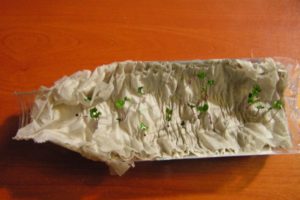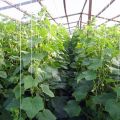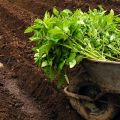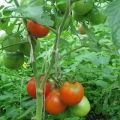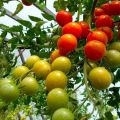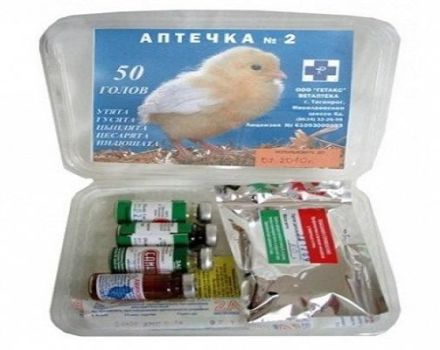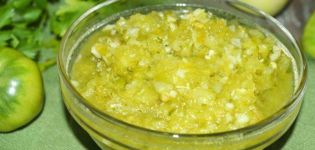How often and correctly to water tomatoes in a greenhouse with a drip method
When planting tomatoes, it should be borne in mind that how to water the tomatoes in the greenhouse will influence their development. As a result, the yield of vegetables depends on this.
Growing tomato bushes are negatively affected not only by a lack of water, but also by excess moisture. A small proportion of gardeners mistakenly believe that watering should be done very often, using a large amount of water. However, as a result, from such actions, the plant is exposed to diseases, and the yield decreases.
Necessary microclimatic indicators
How to water properly, the frequency and volume of water must be determined based on the microclimatic conditions of the greenhouses. The air in summer has a humidity of about 60 to 80%. Only on very hot days the humidity can be lower and reach 40%. During summer showers, alternating with hot weather, air humidity can approach 90%.
If the watering of tomatoes in a polycarbonate greenhouse is not organized correctly, then the humidity can significantly exceed the permissible indicator, which has a detrimental effect on tomatoes. The peculiarity of tomatoes is that the above-ground part of them prefers dry air, and the roots, to ensure the growth of the stems, require a sufficient amount of water. Therefore, in the greenhouse, optimal conditions should be created by choosing the correct irrigation regime.
Excess water, which forms stagnation at the level of the tomato root system, causes root rot. But if there is not enough water in the soil, then the foliage is dehydrated, causing the plants to overheat, this can lead to the death of the entire bush.
Note! If the leaves of tomatoes curl relative to the central vein, forming a kind of "boat", then this is a clear sign of insufficient soil moisture.
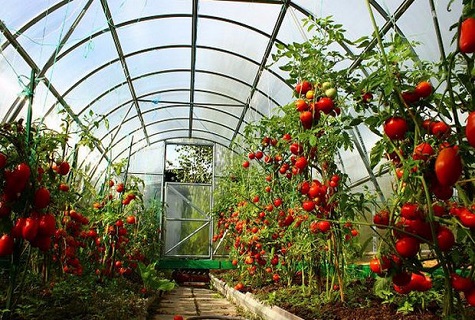
Quantity calculation watering tomato in the greenhouse is carried out in such a way that they provide ninety percent soil moisture and 50% air moisture. This ratio allows the bushes to develop normally, at the same time, protects the plant from infection with fungal bacteria. To maintain an optimal microclimate in the greenhouse, tomatoes are watered after 3-7 days, based on the level of temperature and air humidity.
When irrigating tomatoes, it should be noted that each bush needs 4-5 liters of water, which should only flow into the soil to the root system of the plant, and so that drops do not fall on the foliage. On a sunny day, a drop of water acts as a lens, projecting a sunbeam and increasing its power at times, causing a leaf burn.Therefore, it is recommended to irrigate early in the morning, or in the evening, so that moisture can be absorbed into the soil without creating a greenhouse effect during evaporation.
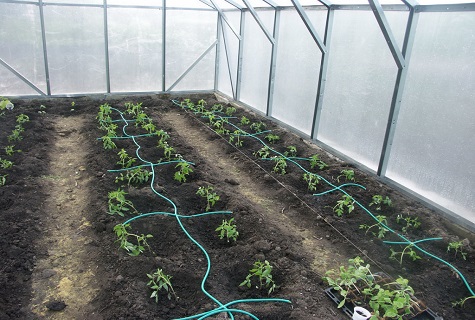
Remember! Watering tomatoes with cool water creates stress on the plant. The optimum water temperature for irrigation should be no less than + 23– + 24 degrees.
Greenhouse watering methods
Greenhouse tomatoes can be watered in several ways.
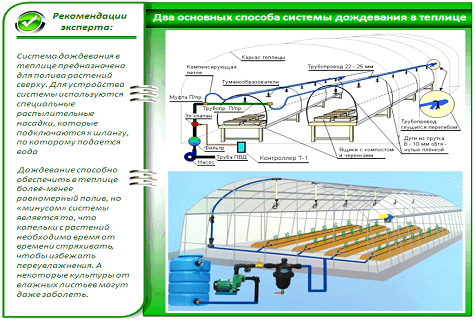
Manual watering
For small structures, manual irrigation is often considered optimal. For this, watering cans and hoses are used to ensure the flow of moisture directly to the roots. If the water does not penetrate the soil quickly enough, you can make several depressions in the soil near the plant.
Watering tomatoes with hoses, using water from a well or plumbing, is dangerous, as it is possible dangerous cooling of their root system. At the same time, there is no strict dosage that provides each plant with the required amount of liquid. And when you change the position of the hose, you can break the planted tomato seedlings. Another disadvantage of this type of irrigation is that a dense crust remains on the soil surface.
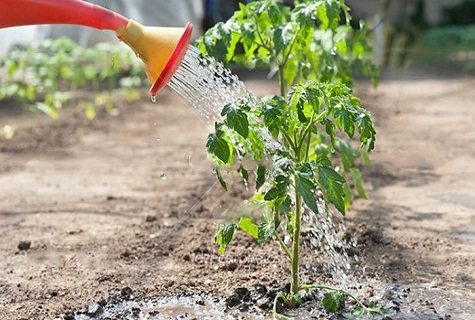
It is better if manual watering of tomatoes in the greenhouse is carried out with watering cans, with settled water of the required temperature. With this method of irrigation, it is necessary to ensure that water does not fall on the aboveground part of the plants, and does not cause burns or hypothermia of the plants during evaporation.
Sometimes a barrel is placed near the greenhouse, into which water is collected. Rainwater collected in containers is considered ideal for irrigation. When a container with water is placed in a greenhouse, then it should be covered with a film or a lid so that an excess of air humidity does not form, which can harm the tomatoes.

Drip irrigation device
This method is used if tomatoes are grown in a greenhouse on large areas. Manual watering in such premises will require a lot of time and labor. To simplify this procedure, a system is being built that will allow drip irrigation of tomatoes.
Moisture is delivered only to the roots, without raising the level of air humidity in the greenhouse, and the ingress of water spray on the aerial parts of the plant is also excluded.
This method can be used to water tomatoes without taking into account the time of day. Also, its advantage is that the soil is not washed out and salinization does not occur. The drip irrigation device for tomatoes in the greenhouse is mounted even before the seedlings are planted. Dense hoses with holes are laid along the length of the rows.
Complete systems are sold in specialized stores. They can be mounted in the greenhouse with your own hands according to the attached instructions. With this system, it is also possible to apply fertilizers during feeding.
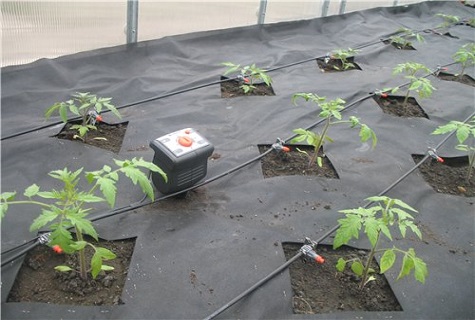
Small greenhouses can be equipped with drip irrigation of tomatoes using plastic bottles. Small holes are made in the bottom of the bottle and they are dug in near the bush, and water is filled through the neck. You can bury the bottle with the neck down, and add water to the cut bottom. This way you can provide slow access of water to the roots of the plant, and you can also accurately determine the volume of liquid required for the plant.
You can also water tomatoes in a polycarbonate greenhouse using another drip irrigation device. It is necessary to build the system using a small hose buried near the plant. The end of the hoses is screwed into the bottleneck, and water flows through a small hole in the bottom, while moisture is slowly delivered to the roots of the tomato.
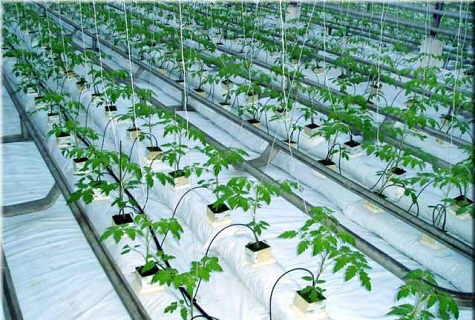
Automation
In industrial greenhouses with a large area, an automatic irrigation system is often used. Only with large areas it is possible to recoup its cost.
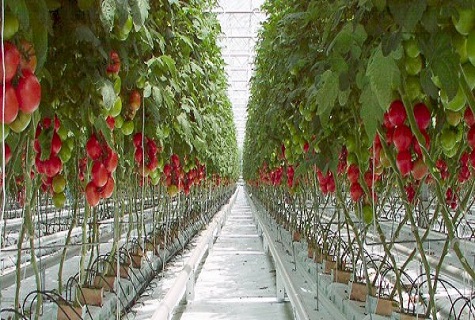
Watering tomatoes at different stages of development
How often to water tomatoes in the greenhouse, and how much water is needed, directly depends on the phases of their development. 2 days before the picking, the seedlings are thoroughly irrigated. This makes it possible for the plants to absorb moisture and it is easier to transfer the transplanting process to another container. The next watering in the greenhouse is carried out on the fourth day after the dive.
When planting seedlings in a greenhouse method, about 4 liters of water are poured into each hole. This contributes to the early rooting of tomatoes. The next watering is carried out only after at least 7-10 days.
After this time, the tomatoes begin to grow intensively. But, since by this time the root system of tomatoes is not yet too developed, it is difficult for them to get the necessary moisture. Because of this, approximately before the start of discoloration, the tomatoes are watered in the greenhouse as often as the ground dries up, this is after about 3 days. For each bush, from 2 to 3 liters of water is consumed for each watering.

During the formation of flowers on a plant, they need 5 liters of water. The frequency of watering during this period is reduced to 1 time every 7 days, and when the fruits are poured, watering is again carried out twice a week. Do not water the bushes with too much water, so that moisture stagnation does not form. This causes rotting of the tomato root system. If the fruits begin to ripen on the hands, then watering is carried out once a week, the amount of liquid is reduced to 2 liters under 1 bush. Excessive soil moisture contributes to the formation of cracks in the fruits.
Important! It is recommended to leave open the windows in the greenhouse for some time after watering, so that the fungus does not appear.
The frequency of watering and the volume of water must be taken into account, starting from the weather conditions and the specifics of the structure of a separate greenhouse. Warm and dry weather conditions, does not affect the frequency and abundance of watering. You should only pay attention to the fact that when watering, moisture is not splashed on the foliage, to avoid plant burns.
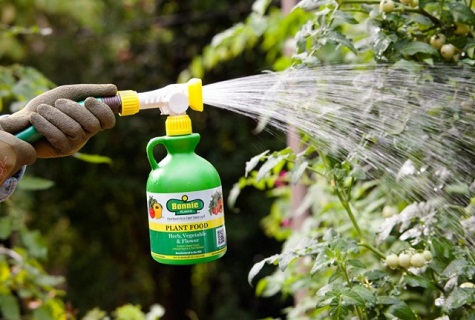
It should also be borne in mind that late watering will require prolonged ventilation of the greenhouse room, which can be bad for plants due to the cool night air. It is optimal to carry out irrigation in the evening. But if the weather is cool and damp, then it is recommended to water until noon, so that the excess moisture in the greenhouse disappears faster.
